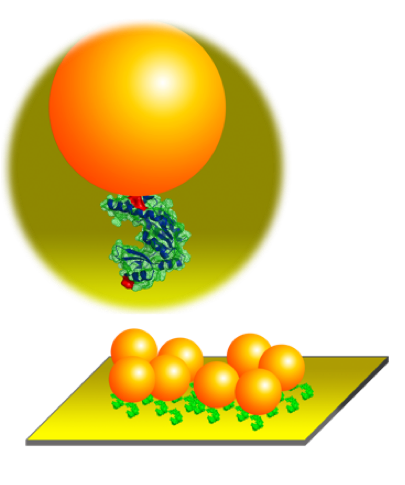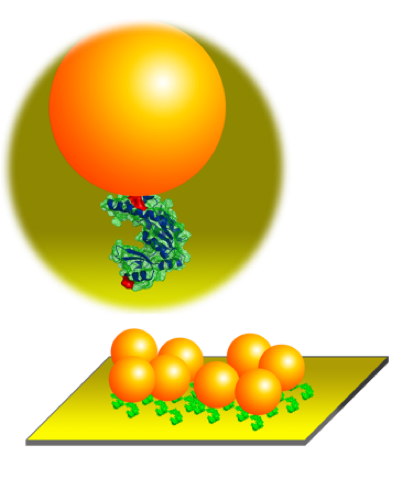Mechanical proteins
Nanorheology⎯the study of deformation of matter, particularly complex molecules, at the nanoscale⎯is beginning to give a clearer picture of the mechanics of biological macromolecules such as proteins and short DNA strands, both of which can act as molecular springs.
In their paper in Physical Review Letters, Yong Wang and Giovanni Zocchi at the University of California, Los Angeles, apply the techniques of rheology to the motion of charged gold nanoparticles tethered to a gold surface by globular proteins.
The particles are driven by an alternating current that produces deformations in the protein chain. With evanescent scattered light from a laser, the authors probe the frequency-controlled motion of the protein and determine its spring constant and friction coefficient. The deformations are small, leading to a strain of only around , allowing the authors to measure mechanical properties of the protein without damaging it, an advantage over other common methods. – Sami Mitra





